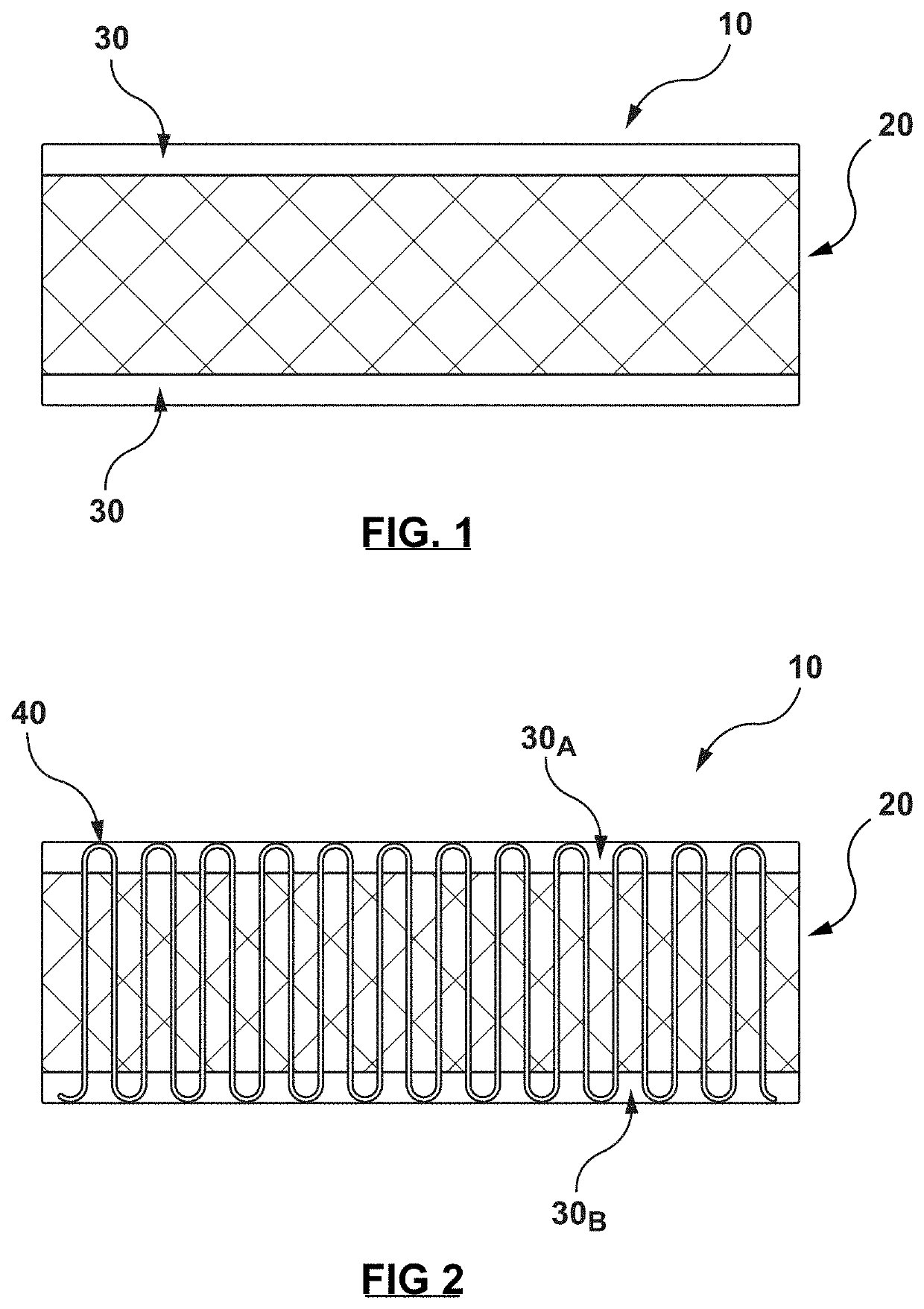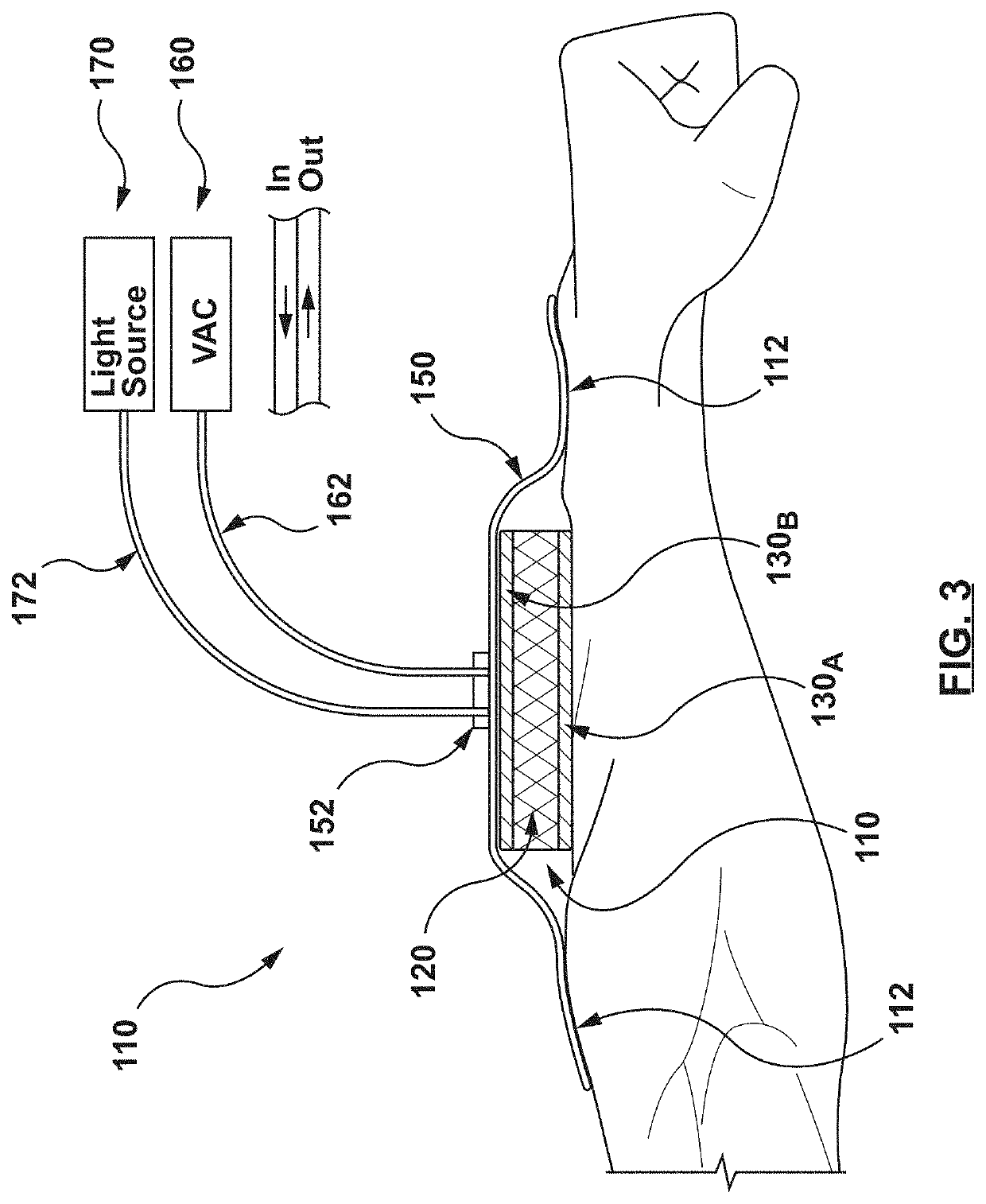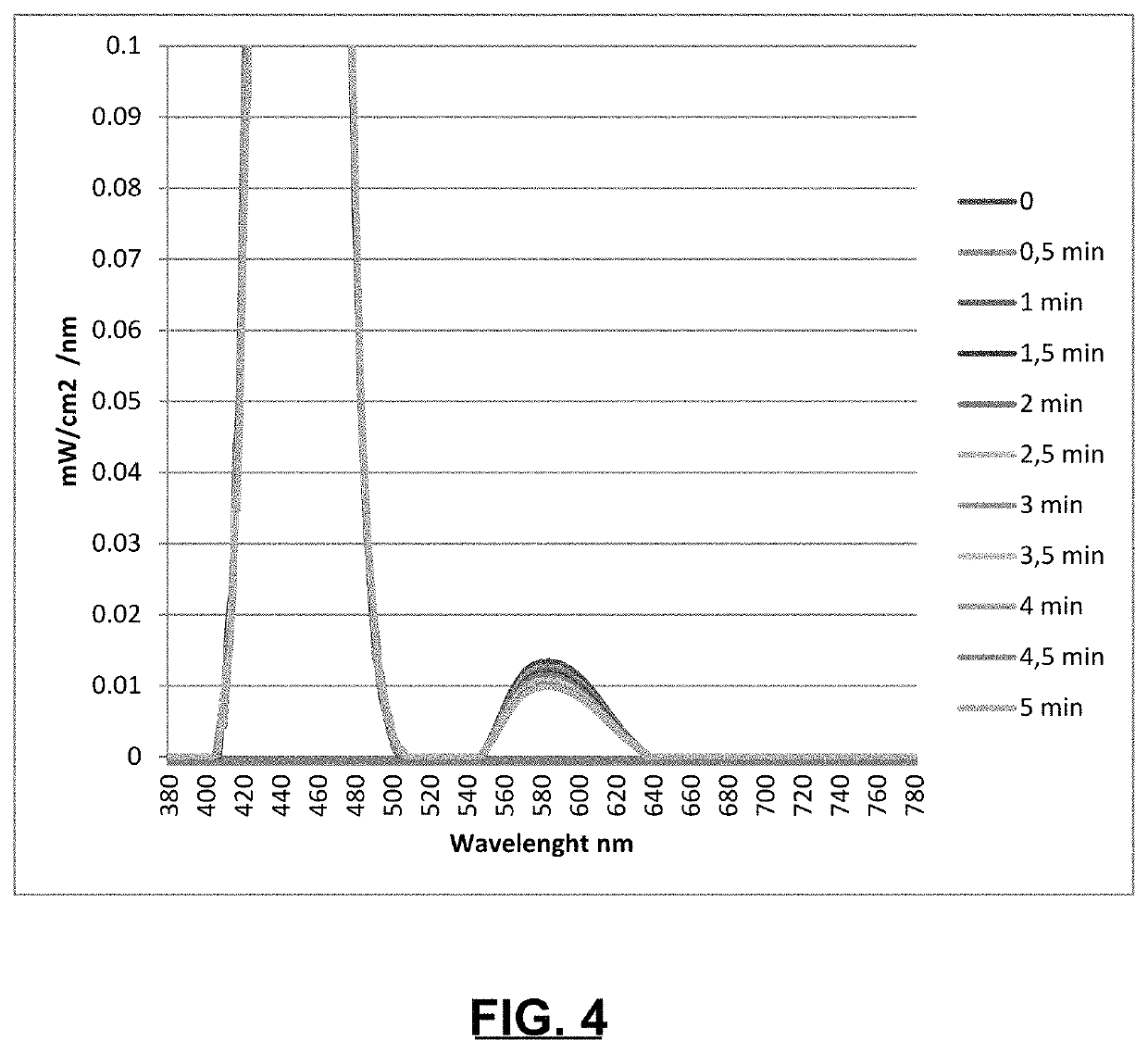Absorbent biophotonic devices and systems for wound healing
a biophotonic device and wound healing technology, applied in the field of absorbent biophotonic devices and wound healing, can solve the problems of less able to successfully fight, less able to naturally close the wound, less oxygen and nutrients, etc., and achieve the effect of reducing scarring
- Summary
- Abstract
- Description
- Claims
- Application Information
AI Technical Summary
Benefits of technology
Problems solved by technology
Method used
Image
Examples
example 1
s of Absorbent Biophotonic Devices
[0132]Experiments were performed to assess several properties of the absorbent biophotonic devices of the present technology. The properties assessed in the experiments were: fluorescence, water absorption capability and leaching of photoactivatable agents out the absorbent biophotonic device. Absorbent biophotonic devices with different configuration, composition and thickness were tested. The absorbent biophotonic devices tested had a photoactivatable core comprising nylon comprising Eosin Y as photoactivatable agent and an absorbent material made of polyethylene. The absorbent biophotonic devices tested were as follows:
[0133]Pad #1: 0.80-inch thick foam—one side foam, one side nonwoven
[0134]Pad #2: ⅛-inch thick foam—one side foam, one side nonwoven
[0135]Pad #3: ¼-inch thick foam—one side foam, one side nonwoven
[0136]Pad #4: 1 / 16-inch foam on each side of nonwoven
[0137]Pad #5: ⅛-inch foam on each side of nonwoven
[0138]Pad #6: 0.80-inch foam on eac...
example 2
vity of Absorbent Biophotonic Systems
[0156]Experiments were performed to the photoactivity of an absorbent biophotonic system according embodiments of the present technology wherein the absorbent biophotonic devices of the present technology were used in combination with a negative pressure wound treatment system.
[0157]The absorbent biophotonic system was tested for the efficiency of its photoactivating agent at a negative Pressure of −50 mmHg, −100 mmHg or −200 mmHg. A 1 cm thick photoactivatable core was prepared using nylon fibers comprising Eosin Y as light-accepting molecule. A top polyurethane foam absorbent liner having a thickness of ⅛ of an inch was placed on the top surface of the photoactivatable core and a bottom polyurethane foam absorbent liner also having a thickness of ⅛ of an inch was placed on the top surface of the photoactivatable core. Table 7 below indicates the composition of the absorbent biophotonic devices that were used in the experiments as well as the pa...
example 3
of Photoactivatable Agent Out of Absorbent Biophotonic Devices
[0159]An experiment was performed to assess the level of light-accepting molecules leaching out of the absorbent biophotonic device of the present disclosure. Absorbent biophotonic devices with different composition were placed in contact with a liquid for 24 hours. The amount of light-absorbing molecules present in the liquid after 24 hours was measured. The results are presented in Table 11 and Table 12.
TABLE 11Composition of the absorbent biophotonic pads tested for leaching of light-activating moleculesAbsorbentBiophotonic PadPhotoactivatable CoreAbsorbent linersNeedledA50 g of nylon fibers (sheet core: 90%top liner + bottom polyurethaneneedled / puncturedDOPPED with chromophore + 10% BiCo)foam liners ( 1 / 32 inches each)through bothabsorbent linersB50 g of nylon fibers (sheet core: 90%top liner + bottom polyurethaneneedled / puncturedDOPPED with chromophore + 10%foam liners ( 1 / 32 inches each)through bothBLANK / no chromoph...
PUM
 Login to View More
Login to View More Abstract
Description
Claims
Application Information
 Login to View More
Login to View More - R&D
- Intellectual Property
- Life Sciences
- Materials
- Tech Scout
- Unparalleled Data Quality
- Higher Quality Content
- 60% Fewer Hallucinations
Browse by: Latest US Patents, China's latest patents, Technical Efficacy Thesaurus, Application Domain, Technology Topic, Popular Technical Reports.
© 2025 PatSnap. All rights reserved.Legal|Privacy policy|Modern Slavery Act Transparency Statement|Sitemap|About US| Contact US: help@patsnap.com



